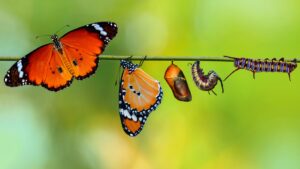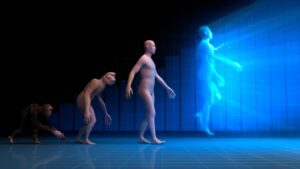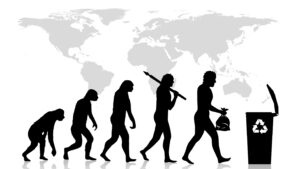Delving into the intriguing world of evolution, this article explores the compelling dynamics of natural and artificial selection. It’s a journey that takes us from the wild, unpredictable mechanisms of nature to the calculated, purposeful strategies of human influence.
From Darwin’s finches to the domestication of dogs, we’ll unravel the mysteries of how species change over time. We’ll also delve into how human intervention accelerates these changes, shaping the world around us in fascinating ways.
Prepare to embark on a riveting exploration of evolution, where you’ll discover the intricate dance between natural and artificial selection, and the profound impact they have on the world we live in.
Student Exploration: Evolution: Natural and Artificial Selection
 Understanding evolution entails diving into fundamental concepts. A primary focus lies on both natural and artificial selection, critical drivers in the propulsion of species’ diversification.
Understanding evolution entails diving into fundamental concepts. A primary focus lies on both natural and artificial selection, critical drivers in the propulsion of species’ diversification.
Natural selection, a concept initially proposed by Charles Darwin, underpins the mechanism of evolution. This concept postulates that individuals with traits best suited for their environment survive and reproduce more effectively than others. For instance, consider a population of giraffes in which some are short-necked, and some are long-necked. In environments with high, inaccessible leaves, long-necked giraffes might have a survival advantage as they can reach additional food sources. They’ll then pass this trait—which can rise due to genetic variation, gene flow, mutation, or non-random mating—onto their offspring. As a result, the population gradually transforms towards a predominantly long-necked giraffe species. Hence, by favoring certain traits and weeding out less advantageous ones, natural selection directly impacts an organism’s biological makeup and its behavior.
Artificial Selection Explained
 Whereas natural selection is a natural process, artificial selection involves human intervention and manipulation. Humans, for several reasons, deliberately encourage the reproduction of organisms with traits deemed desirable. For example, dog breeding constitutes a common practice of artificial selection. If humans desire a dog type with a specific characteristic, such as size or temper, breeders will allow only the dogs that exhibit these traits to reproduce. Thus, over time, breeds change in line with human preference.
Whereas natural selection is a natural process, artificial selection involves human intervention and manipulation. Humans, for several reasons, deliberately encourage the reproduction of organisms with traits deemed desirable. For example, dog breeding constitutes a common practice of artificial selection. If humans desire a dog type with a specific characteristic, such as size or temper, breeders will allow only the dogs that exhibit these traits to reproduce. Thus, over time, breeds change in line with human preference.
Artificial selection has also played a significant role in agriculture with the cultivation of domesticated plants and livestock animals. Farmers often select animals or plants with desired traits, ensuring their propagation while discouraging others. This process has led to the variety of crops and animal breeds we see today. From dairy cows bred for high milk production to wheat types selected for disease resistance, artificial selection profoundly impacts our world.
By comprehending these mechanisms, one gains clarity on the impressive pace and diverse directions in which life on Earth has evolved. Whether through natural or artificial methods, the power of selection remains a poignant testament to the complexities and wonders of evolution.
The Importance of Student Exploration in Learning Evolution
 Student exploration plays an essential role in mastering complex concepts such as evolution. It allows learners to grasp integral elements of natural and artificial selection processes. This hands-on approach can lead to a more profound understanding due to its immersion factor, thereby illustrating the interconnectedness of living organisms and the mechanisms that drive their development.
Student exploration plays an essential role in mastering complex concepts such as evolution. It allows learners to grasp integral elements of natural and artificial selection processes. This hands-on approach can lead to a more profound understanding due to its immersion factor, thereby illustrating the interconnectedness of living organisms and the mechanisms that drive their development.
Benefits of Interactive Learning
Interactive learning promotes active engagement, immersing students in complex topics like evolution. For instance, by simulating the changes in bird beak lengths based on food availability, students can visualize how natural selection affects species over generations. Research indicates that this method of learning significantly improves comprehension, recall, and retention rates.
Challenges in Understanding Evolutionary Concepts
Evolution, with its intricate mechanisms of natural and artificial selection, presents students with several challenges. Primarily, because evolution often occurs over long time scales that are difficult to comprehend. Secondly, the abstract concepts such as genetic variation, gene flow, and random mutations can be tough to grasp without concrete examples. Lastly, there might be misconceptions or preconceived notions about evolution that hinder the learning process.
Pairing student exploration with supportive educative frameworks can alleviate these challenges. Interactive activities like genetic drift simulations help students visualize these concepts. Resourceful guides can address misconceptions and elucidate the process of evolution effectively.

